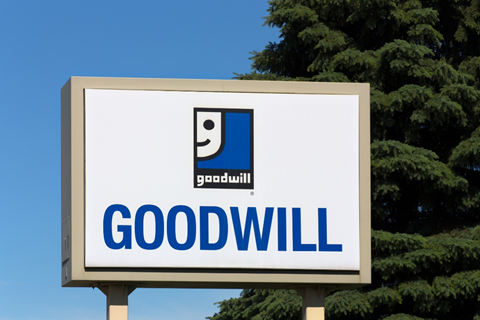What do you mean by negative goodwill?
Negative goodwill (NGW), also known as the bargain purchase amount, is the money paid by a company when it purchases another company or its assets at a significantly lower price compared to its actual fair market values. Typically, the bargain purchase amount is the gap between the price at which an asset is bought and its actual fair market value.
Usually, negative goodwill symbolises that the party or company being sold is either distressed or has become bankrupt. Hence, the only option available before it is to discharge its assets for a portion of its worth.
It is to be noted that negative goodwill is not always beneficial for the buyer. Negative goodwill is contrary to goodwill, a situation where one firm pays a premium for the assets of another firm. Besides, the buying parties must declare negative goodwill in their financial statement. Noticeably, both goodwill and negative goodwill come under generally accepted accounting standards (GAAP).
Summary
- Negative goodwill is the money paid by a company when it purchases another company or its assets at a significantly lower price compared to its actual fair market values.
- It is mandatory for the acquiring/buying parties to declare negative goodwill in their financial statement.
- Usually, negative goodwill symbolises that the party or company being sold is either distressed or has become bankrupt.
Frequently Asked Questions
Explain negative goodwill in detail with the help of examples.
In Accounting, the concepts of goodwill and negative goodwill are created to recognise the challenges involved in measuring the value of non-monetary assets like the company's reputation, licenses, patents, and consumer base. These intangible assets of a company vary from the tangible assets such as equipment, building, machinery, or inventory. Mainly, when a company acquires another company or its assets, the transactions include goodwill, where the amount paid by the purchaser exceeds the value of the selling party's tangible assets. However, negative goodwill occurs very rarely, where the value of non-monetary/intangible assets should be recorded as a profit on the buyer's financial statement.
The GAAP make it mandatory for the companies to report their goodwill and negative goodwill under the Financial Accounting Standards Board (FASB) Statement Number 141. In addition, when the value of all the acquired assets of a company is more than the company's purchase price, it is said to be a "bargain purchase." When the buyer reports gain for financial accounting purposes in a bargain purchase, this profit leads to an immediate increase in the net income. Furthermore, tracking negative goodwill is important because it provides an investor a more comprehensive picture of his company's value. Any business deal that includes negative goodwill increases recorded assets, net income, potentially misrepresenting performance metrics such as return on assets and return on equity, which would seem lower because of this.
Examples
To understand negative goodwill with the help of an example, let us suppose company X purchases the assets of company Y for $50 million; however, the actual worth of these assets in the market is $90 million. This deal takes place only because Y is in urgent need of cash, while company X is the only firm ready to pay the said amount. Here, X needs to report the $40 million gap between the purchase price and the fair value, which is the negative goodwill in its financial statement.
One real-life example of negative goodwill is that in 2009, Lloyds Banking Group (formerly known as Lloyds TSB) purchased HBOS plc (banking and insurance company) at a purchase price that was considerably lower than the value of HBOS plc's net assets. As a result, this business deal produced negative goodwill of around GBP 11 billion, which the British retail and commercial bank Lloyds Banking Group added in its income statement that year.

Image Source: © Wolterk | Megapixl.com
What are few important signs of negative goodwill?
Several indications suggest that the transaction involved in a business deal is negative goodwill. Some of the signs include:
- The company that another company is purchasing has incurred huge financial losses in the recent past or is overburdened with debt and cannot repay the debt.
- The actual fair market value of the company's assets exceeds the purchase price paid by the acquirer.
- The transaction has taken place in secrecy, and a possibility of higher value has not been explored.
- Presence of a single bidder.
- The business deal was finalised in haste and within a minimal period.
- The owner of the selling company is forced to sell the business without his will.
- The purchaser knows the acquired business well as compared to the seller.
There should exist a substantial reason to explain why a transaction involves a bargain purchase. If the purchase price allocation cannot be explained precisely, in that case, there will be a need for re-evaluation of the fair market value of the company's asset. However, if this is done, it may conclude that company's fair market value is greater than the purchase price.
Why does negative goodwill occur?
Forced or financially distressed sale of the company:
- Negative goodwill usually represents that the selling party is in poor financial condition or is declared bankrupt and is left with no other option but to clear out its assets for a portion of its worth.
Erroneous valuation of intangible assets:
- Incorrect valuation of assets can lead to lower market values and thus negative goodwill.
How is negative goodwill represented in accounting books?

Image Source: © Lovelyday12 | Megapixl.com
Accounting for negative goodwill
According to GAAP, the acquiring company must report both goodwill and negative goodwill in its income statements.
Negative goodwill in the income statement
The acquiring company must report negative goodwill as a "gain on acquisition" beneath the non-cash income statement sources.
Negative goodwill in the balance sheet
Negative goodwill is a part of the liabilities section in the balance sheet of the selling because it reduces its valuation. In contrast, the selling company records goodwill as an asset. Furthermore, to indicate the amount of negative goodwill, goodwill can be recorded as a contra-asset.
Negative goodwill in the statement of cash flows
In the cash flow statement of the acquiring company, negative goodwill is typically reported as a "gain on the acquisition," or it is reported as a "gain on bargain purchase" to represent the extra value acquired in the form of negative goodwill.
 Please wait processing your request...
Please wait processing your request...